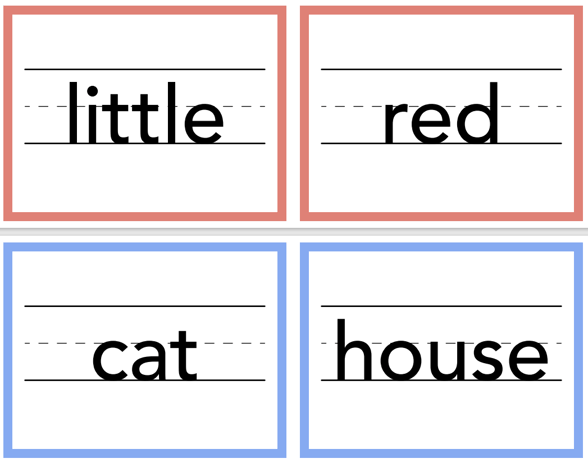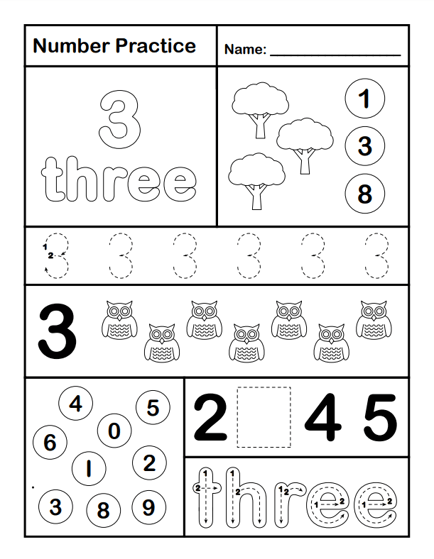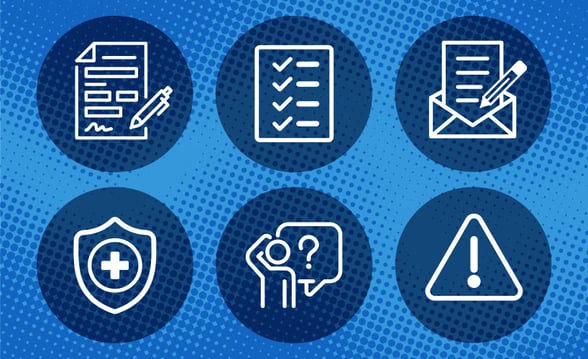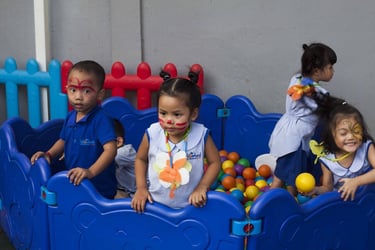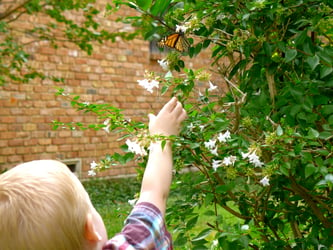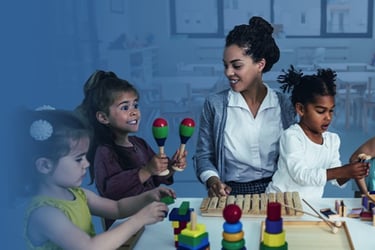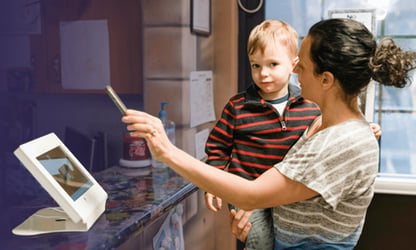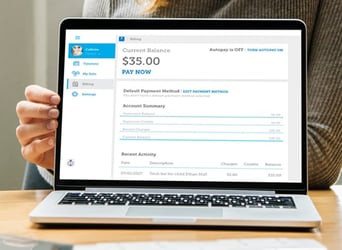Dive into the world of focused, fun and interactive small group activities for preschool. Discover engaging activities tailored to your little learners' curiosity and developmental stages. From dramatic play that sparks imagination to hands-on projects that enhance fine motor skills, witness the joy of discovery in their eyes. Don't miss out on this treasure trove of ideas to make every moment of learning special and impactful. Embark on this journey to unlock the full potential of your preschool classroom, and prepare children for the kindergarten classroom.
Table of Contents
- Favorite Small Group Games and Activities by Type
- Dramatic Play
- Preschool Activities for Fine Motor Skills
- Literacy Small Group Activities for Preschoolers
- Small Group Math Activities for Preschoolers
- Music and Movement Activities
- Outdoor Games
- Science Small Group Activities for Preschoolers
- Christmas Small Group Activities for Preschoolers
- Thanksgiving Small Group Activities for Preschoolers
- Small Group Winter Activities for Preschoolers
- Social-Emotional Small Group Activities for Preschoolers
Favorite Small Group Games and Activities by Type
Dramatic Play
1. Pretend Restaurant
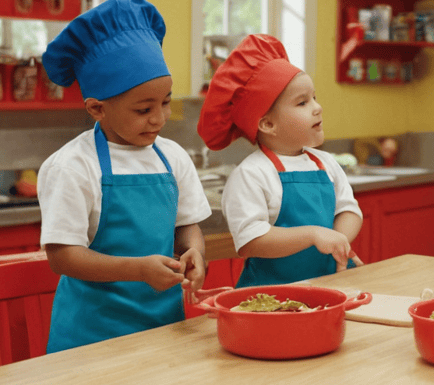
Overview: In this engaging pretend play activity, preschoolers create and run their own pretend restaurant, taking on roles such as chefs, servers and customers. This activity encourages social interaction, communication, cooperation and imaginative play while introducing basic concepts of money and food preparation.
Materials:
- Play kitchen set or cardboard boxes to create a kitchen area
- Toy dishes, utensils and play food
- Menus (can be created with pictures for non-readers)
- Play money or cash register
- Aprons, chef hats and other dress-up items (optional)
Setup:
- Designate an area in the classroom or play space for the pretend restaurant.
- Set up the play kitchen or create a simple kitchen using cardboard boxes.
- Arrange the toy dishes, utensils and play food in the kitchen area.
- Create menus with pictures of food items and prices.
- Place the menus, play money and dress-up items near the restaurant area.
Instructions:
- Introduce the concept of a restaurant to the children, discussing the different roles people play (e.g., chefs, servers, customers).
- Divide the children into small groups, assigning roles such as chefs, servers and customers.
- Encourage the "chefs" to prepare meals using the play food and kitchen set.
- Have the "servers" take orders from the "customers" using the menus and write them down on paper.
- The "chefs" can then pretend to cook the meals and give them to the "servers" to deliver to the "customers."
- "Customers" can pay for their meals using the play money.
- Rotate roles so each child has the opportunity to experience different aspects of running a restaurant.
- Encourage the children to engage in conversations and social interactions throughout the activity.
2. Superhero Adventure
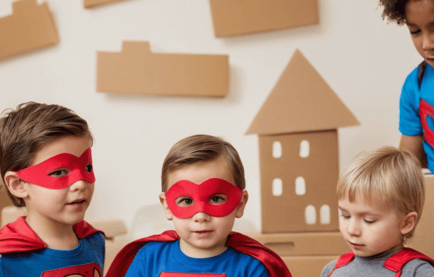
Overview: This exciting dramatic play activity allows preschoolers to create their own superhero characters and embark on imaginary adventures. By engaging in this activity, children develop creativity, problem-solving skills and social interaction while exploring themes of heroism and helping others.
Materials:
- Superhero capes, masks and other dress-up items
- Cardboard boxes or blocks for building structures
- Play phones or walkie-talkies for communication (optional)
- Paper and crayons for creating superhero logos and signs (optional)
Setup:
- Set aside a small group area in the classroom or play space for the superhero adventure.
- Place the dress-up items, cardboard boxes and other materials in the designated area.
- If desired, create a simple backdrop or setting using large sheets of paper or cardboard to represent a city or other environment.
Instructions:
- Introduce the concept of superheroes to the children, discussing their special powers and how they help others.
- Encourage the children to create their own superhero characters independently, choosing dress-up items and making up names and special abilities for their heroes.
- Divide the children into small groups and have them work together to build a "city" or other setting using the cardboard boxes and blocks.
- Present the children with a problem or challenge that their superhero characters must solve, such as rescuing a trapped animal or finding a lost item.
- Have the children work together in their small groups to devise a plan and act out the solution using their superhero characters.
- Encourage the children to use play phones or walkie-talkies to communicate with each other during the adventure.
- After the challenge is completed, have the children discuss their experience and how their characters worked together to save the day.
- Repeat the activity with new challenges and have students pick new superhero characters and powers.
Preschool Activities for Fine Motor Skills
3. Clothespin Color Matching
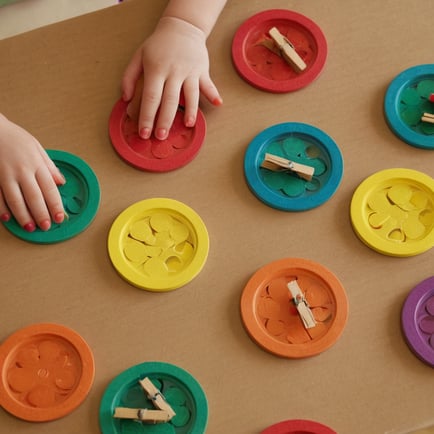
Overview: This activity helps preschoolers develop fine motor skills and color recognition by having them match colored clothespins to corresponding colored circles. As children manipulate the clothespins to clip them onto the matching circles, they improve their hand-eye coordination and strengthen small muscles and pincer grip.
Materials:
- Colored clothespins (various colors)
- Cardstock or construction paper
- Markers or crayons in colors matching the clothespins
- Scissors
Setup:
- Cut the cardstock or construction paper into circles, approximately three inches in diameter.
- Use the markers or crayons to color each circle to match one of the clothespin colors.
- Arrange the colored circles on a table or flat surface.
- Place the clothespins in a container near the circles.
Instructions:
- Introduce the activity to the children, explaining that they will be matching the colored clothespins to the circles of the same color.
- Demonstrate how to open and close a clothespin and clip it onto a circle.
- Encourage the children to pick up a clothespin, identify its color and find the matching colored circle.
- Have the children clip the clothespin onto the edge of the matching circle.
- Continue the activity until all clothespins have been matched to their corresponding circles.
- As the children work, encourage them to name the colors they are matching and praise their efforts.
- Once all the clothespins are matched, have the children remove them from the circles and start again, mixing up the order of the circles to provide a new challenge.
4. Playdough Sculpture Garden
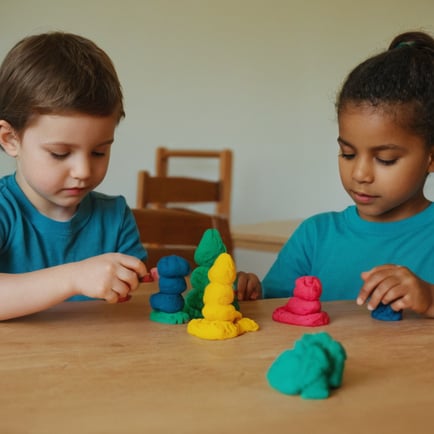
Overview: This activity is perfect for preschool because it encourages creativity and fine motor skill development as preschoolers create their own miniature sculptures using playdough and various tools. By manipulating the playdough and using tools to add details, children improve their hand strength and dexterity while engaging in imaginative play.
Materials:
- Playdough in various colors
- Rolling pins
- Cookie cutters
- Plastic knives or playdough tools
- Small decorative items (e.g., beads, sequins, feathers)
- Cardboard or paper plates
Setup:
- Divide the playdough into small portions for each child.
- Place the playdough and tools on a table or work surface.
- Provide each child with a cardboard or paper plate to use as a base for their sculpture.
Instructions:
- Introduce the concept of a sculpture garden to the children, explaining that they will be creating their own miniature sculptures using playdough.
- Demonstrate how to use the rolling pin to flatten the playdough and the cookie cutters to create various shapes.
- Show the children how to use the plastic knives or playdough tools to add details and texture to their sculptures.
- Encourage the children to work independently and use their imagination to create unique sculptures, such as animals, buildings or abstract designs.
- As the children work, provide guidance and praise their efforts.
- Once the sculptures are complete, have the children place them on their cardboard or paper plate bases.
- Create a display area for the playdough sculpture garden and encourage the children to admire each other's creations.
- Discuss the different sculptures with the children and ask questions to encourage them to describe their creations and the techniques they used.
Literacy Small Group Activities for Preschoolers
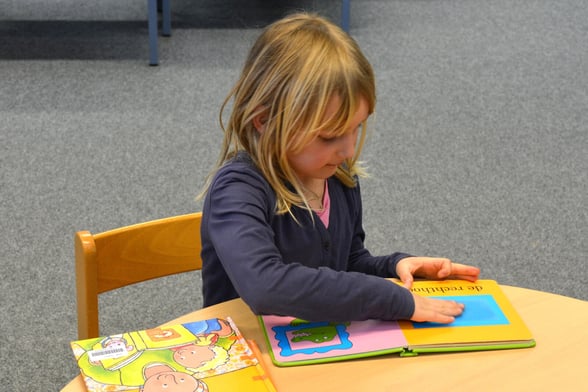
Engaging preschoolers in literacy activities is a fantastic way to foster their love for reading and writing. Small group literacy activities for preschoolers provide an interactive and collaborative learning experience, allowing children to develop their language skills while having fun. Here are a few ideas for small group literacy activities that will captivate your little learners.
5. Alphabet Scavenger Hunt
Overview: This engaging literacy activity for preschool students combines physical movement with letter recognition as preschoolers search for hidden alphabet cards around the classroom or outdoor play area. By participating in this activity, children practice identifying letters and they'll develop an understanding of the alphabet sequence.
Materials:
- Alphabet cards (one for each letter)
- Tape or adhesive putty
- Paper and pencil for recording found letters
Setup:
- Before the activity, hide the alphabet cards around the designated play area, making sure they are visible but not too easy to find.
- Provide each child or small group with a piece of paper and a pencil to record the letters they find.
Instructions:
- Explain to the children that they will be going on an alphabet scavenger hunt to find hidden letters around the play area.
- Divide the children to create small groups or pairs, depending on the size of your class.
- Encourage the children to search for the hidden alphabet cards, working together with their group or partner.
- As they find each letter, have them record it on their paper in the correct alphabetical order.
- Provide assistance and encouragement as needed, helping children identify letters and ensuring they are recording them correctly.
- Once all the letters have been found, gather the whole group of children together and review the alphabet sequence, having them read out the letters they recorded.
- Discuss any challenges the children encountered and celebrate their success in completing the alphabet scavenger hunt.
6. Sight Word Treasure Hunt
Overview: This exciting literacy activity for preschool and kindergarten students combines physical movement and word recognition as they search for hidden sight word flashcards around the classroom or outdoor play area. By participating in this activity, children practice identifying and reading common sight words, building their reading confidence and fluency.
Materials:
- Sight word flashcards (choose words appropriate for your students' level)
- Tape or adhesive putty
- Paper and pencil for recording found words
- Treasure chest or box for collecting found flashcards
Setup:
- Before the activity, hide the sight word flashcards around the designated play area, making sure they are visible but not too easy to find.
- Provide each child or small group with a piece of paper and a pencil to record the words they find.
- Place a treasure chest or box in a central location for children to deposit the flashcards they find.
Instructions:
- Explain to the children that they will be going on a sight word treasure hunt to find hidden words around the play area.
- Divide the children into small groups or pairs, depending on the size of your class.
Encourage the children to search for the hidden sight word flashcards, working together with their group or partner. - As they find each word, have them read it aloud to their partner or group and then record it on their paper.
- Once a word is recorded, have the children bring the flashcard to the central treasure chest or box.
- Provide assistance and encouragement as needed, helping children read and identify words and ensuring they are recording them correctly.
- Once all the words have been found, gather the whole group of children together and review the sight words they collected, having them read each word aloud.
- Discuss any challenges the children encountered and celebrate their success in completing the sight word treasure hunt.
7. Rhyming Basket
Overview: This activity focuses on developing phonemic awareness by having preschoolers match objects that rhyme. By engaging in this literacy skills activity, children learn to identify and produce rhyming words, which is an essential foundational skill for reading and language development.
Materials:
- Basket or container
- Various small objects that rhyme (e.g., cat/hat, rock/sock, bear/pear)
- Labels for each rhyming pair
Setup:
- Place the rhyming objects in the basket or container, keeping each rhyming pair separate.
- Create labels for each rhyming pair and place them near the basket.
Instructions:
- Introduce the concept of rhyming to the children, providing examples of words that rhyme and emphasizing the similar ending sounds.
- Present the rhyming basket to the children, explaining that they will be matching objects that rhyme.
- Pull out one object from the basket and say its name, then ask the children to find the object that rhymes with it.
- Encourage the children to take turns selecting an object from the basket and finding its rhyming match.
- As each rhyming pair is found, place them together on the table or floor and have the children repeat the rhyming words.
- Continue the activity until all rhyming pairs have been matched.
- Extend the activity by having the children think of other words that rhyme with the objects in the basket.
- Discuss the importance of rhyming in language and how it helps with reading and speech development.
8. Letter Matching
Letter Matching is an engaging and educational small group activity for preschoolers that helps them develop their literacy skills. This activity allows children to practice recognizing and matching letters, a crucial step in learning to read and write.
To play Letter Matching, you will need a set of letter cards. These can be homemade using index cards or purchased from educational stores. Each card should have both uppercase and lowercase versions of the same letter.
To begin the activity, spread out all the letter cards on a table or floor. Encourage the children to take turns picking up one card at a time. They should then try to find its match among the other cards.
As they search for matches, preschoolers will reinforce their knowledge of individual letters and develop important visual discrimination skills. Focusing on similarities and differences between letters builds a strong foundation for future reading success.
Make sure to provide positive reinforcement as children successfully match pairs of letters. This will keep them motivated and excited about learning!
9. Mail a Letter
In this fun small group activity, preschoolers get to play the role of little postmasters. They can create their own mailbox using cardboard or repurpose an old shoebox. Decorate it with vibrant colors and stickers to make it even more exciting!
To start, provide the children with paper, envelopes, crayons or markers and some pretend stamps. Encourage them to write letters or draw pictures for their friends or family members. It could be anything from a simple greeting card to an imaginative story.
Once they finish creating their masterpieces, help them fold the paper neatly and place it into the envelope. Guide them on addressing the envelope by writing down the recipient's name (a classmate's name would work well) and their own names as senders.
Next comes one of the most thrilling moments – affixing a stamp! Provide adhesive stickers shaped like stamps for added authenticity. Show children where to place these mini stamps on their envelopes.
Gather all the letters created by your little postmasters and arrange a special delivery time during circle time or at another designated point throughout the day. Set up a tabletop mailbox where each child can drop off their letter.
10. Word Games
One popular word game for preschoolers is "I Spy." In this game, one person chooses an object in the room and says, "I spy with my little eye something that starts with the letter ___."
The other children take turns guessing which object it is based on the clue given. This game encourages children to listen for initial sounds and practice their vocabulary.
Another word game that preschoolers enjoy is "Rhyme Time." In this activity, children take turns saying words that rhyme with a given word. For example, if the word is "cat," children might say "hat," "bat" or "mat." This helps develop phonemic awareness as they identify similar ending sounds.
"Alphabet Scavenger Hunt" is another engaging word game for preschoolers. Children search for objects around the room that start with each letter of the alphabet. They can work together to find objects like an apple for A or a ball for B. This promotes letter recognition and vocabulary building.
Small Group Math Activities for Preschoolers

Mathematics may seem like a daunting subject for preschoolers, but with the right activities, it can become an exciting adventure. Small group math activities for preschoolers provide opportunities to use a collaborative setting to:
- Explore numbers
- Explore shapes
- Explore patterns
- Solve problems
Here are three unique and engaging math activities that will captivate curiosity.
11. Number Hopscotch
Overview: This physical activity combines gross motor skills with number recognition and sequencing. By hopping on numbered squares, preschoolers practice identifying numbers and counting while engaging in an enjoyable, active game.
Materials:
- Sidewalk chalk or masking tape
- Number cards (1-10)
- Beanbag or small throwing object
Setup:
- Using sidewalk chalk or masking tape, create a hopscotch board with 10 squares, each large enough for a child to jump into.
- Place a number card in each square, sequencing them from 1 to 10.
Instructions:
- Explain the rules of hopscotch to the children, demonstrating how to throw the beanbag and hop through the squares.
- Divide the children into small groups and have them take turns playing hopscotch.
- As each child takes their turn, encourage them to say the number in each square as they hop onto it.
- If a child successfully hops through all the squares, have them pick up the beanbag on their way back, hopping over the square where it landed.
- Provide assistance and encouragement as needed, helping children identify numbers and maintain balance while hopping.
- Extend the activity by having the children hop in reverse order (10 to 1) or skip count by twos.
- Discuss the importance of number recognition and sequencing in everyday life and in math.
12. Shape Sorting Picnic
Overview: In this hands-on activity, preschoolers practice recognizing and sorting shapes while pretending to have a picnic. By sorting various shaped objects into corresponding baskets or containers, children develop shape recognition and classification skills.
Materials:
- Baskets or containers labeled with different shapes (circle, square, triangle, rectangle)
- Various objects in the corresponding shapes (e.g., plates, napkins, cups, toys)
- Picnic blanket or tablecloth
Setup:
- Arrange the baskets or containers on the picnic blanket or tablecloth, making sure each one is labeled with a different shape.
- Place the various shaped objects in a mixed pile near the baskets.
Instructions:
- Introduce the concept of a shape sorting picnic to the children, explaining that they will be helping to organize the picnic items by sorting them into the correct shape baskets.
- Hold up each object and have the children identify its shape.
- Encourage the children to take turns selecting an object and placing it in the corresponding shape basket.
- As the children sort the objects, have them name the shape and count how many objects are in each basket.
- Provide assistance and encouragement as needed, helping children identify shapes and praising their efforts.
- Once all the objects have been sorted, have the children help set up the picnic using the sorted items.
- During the pretend picnic, discuss the different shapes and how they are used in everyday objects.
- Extend the activity by having the children search for additional objects in the classroom that match the sorted shapes.
13. Math Worksheets
Math worksheets are a simple and fun activity that works for both small and large groups. As part of our continued commitment to providing pre-kindergarten teachers with free materials and the best preschool management software, we've built five math worksheets to help pre-K learners master the numbers 1 through 5. These kinds of exercises are an important part of preparing preschoolers for kindergarten.
14. Fishing Math Game
The Fishing Math Game is a fun and interactive small group activity for preschoolers to practice their math skills. Not only does it engage children in hands-on learning, but it also helps them develop important cognitive abilities.
- Magnetic fish cutouts or foam fish shapes
- Fishing rod with a magnet
- Water-filled container or blue blanket or paper
Begin by spreading out the fish on a blue blanket or sheet. Each fish should have a number written on it. Then, give each child a fishing rod and explain that they need to catch as many fish as they can.
As they catch each fish, ask them to identify the number written on it aloud. This allows them to practice counting and recognizing numbers while having fun.
You can also introduce addition or subtraction by asking questions like "If you catch two fish with numbers 3 and 4, how many do you have in total?"
Through this game, children enhance their math skills and improve hand-eye coordination and concentration. It's an excellent way for preschoolers to learn while having a great time!
15. Button Counting
Button Counting is a fun and interactive small group math activity for preschoolers that helps them develop their counting skills while also improving their fine motor skills. This activity can be done in small groups, allowing children to learn together and engage with one another.
To start the activity, you will need a collection of buttons in different colors and sizes. The buttons can be placed in a container or spread out on a table.
Each child will then take turns picking up buttons and counting them out loud. They can sort the buttons by color or size as they count, further enhancing their cognitive abilities.
By engaging in button counting, preschoolers are learning basic math concepts such as number recognition and counting principles and developing important hand-eye coordination and concentration skills. They are encouraged to use their fingers to pick up each button, which improves their fine motor dexterity.
This hands-on approach allows children to actively participate in the learning process while enjoying themselves at the same time. It's an excellent way for preschoolers to practice counting in a fun and interactive manner, setting them up for success when they transition into more advanced math activities later on.
16. Graphing
Graphing can help preschoolers learn important concepts like counting, sorting and comparing. With just a few materials, you can create an engaging graphing activity for small groups of preschoolers.
To begin, gather some objects or pictures that represent different categories. For example, you could use pictures of fruits to represent the category of "fruit" or preschool toys to represent the category of "vehicles." Arrange these items in a line or on a table where children can easily see them.
Next, provide each child with their own graphing chart. This chart can be as simple as drawing columns on a piece of paper and labeling them with the different categories. Encourage the children to count how many objects are in each category and then place a mark in the corresponding column on their chart.
As they continue to add marks to their charts, ask questions like, "Which category has the most?" or "Are there more fruits than vehicles?" This will help children practice comparing quantities and discussing their findings with their peers.
Music and Movement Activities
17. Freeze Dance Party
Overview: This lively activity combines music, movement and listening skills as preschoolers dance to music and freeze when the music stops. By engaging in this activity, children develop gross motor skills, self-regulation and the ability to follow directions.
Materials:
- Music player
- Age-appropriate music playlist
- Open space for dancing
Setup:
- Create an open space in the classroom or play area for dancing.
- Prepare a playlist of age-appropriate music with various tempos and styles.
Instructions:
- Explain the rules of Freeze Dance to the children, demonstrating how to dance when the music plays and freeze when it stops.
- Start the music and encourage the children to dance freely, using different movements and expressions.
- Randomly pause the music throughout the activity, signaling the children to freeze in place.
- Encourage the children to hold their freeze poses until the music resumes.
- Provide praise and encouragement for creative dance moves and successful freezing.
- Extend the activity by having the children take turns controlling the music or by introducing different themes for each round of dancing (e.g., animal movements, emotions).
- Discuss the importance of listening, self-control and following directions in various situations.
18. Musical Instrument Exploration
Overview: This activity encourages preschoolers to explore various musical instruments and create their own sounds and rhythms. By engaging in this activity, children develop an understanding of cause and effect, practice fine motor skills and express creativity through music.
Materials:
- Various age-appropriate musical instruments (e.g., maracas, tambourines, bells, drums)
- Open space for sitting and exploring instruments
Setup:
- Arrange the musical instruments in the open space, making sure there are enough for each child to have at least one.
- Create a comfortable seating area for the children to sit while exploring the instruments.
Instructions:
- Introduce the concept of musical instrument exploration to the children, explaining that they will have the opportunity to play with different instruments and create their own music.
- Demonstrate how to use each instrument, emphasizing proper handling and safety.
- Encourage the children to select an instrument and explore the sounds it makes.
- Allow the children to freely play their instruments, experimenting with different rhythms, tempos and volumes.
- Encourage the children to trade instruments with their peers, giving everyone a chance to try different ones.
- Lead the children in simple songs or rhythmic patterns, having them play along with their instruments.
- Extend the activity by having the children create their own "band" and perform a simple musical piece together.
- Discuss the different instruments and the sounds they make, as well as the role of music in expressing emotions and creativity.
Outdoor Games
19. Obstacle Course Adventure
Overview: This engaging outdoor activity encourages preschoolers to develop gross motor skills, balance and problem-solving abilities while navigating a fun and challenging obstacle course. By creating a safe, exciting environment, children can explore their physical capabilities and build confidence in their movements.
Materials:
- Various outdoor play equipment (e.g., hula hoops, cones, tunnels, balance beams)
- Chalk or tape for marking the course
- Stopwatch or timer
- Medals or stickers for completion
Setup:
- Design an age-appropriate obstacle course using the available outdoor play equipment.
- Use chalk or tape to mark the course, creating a clear path for the children to follow.
- Ensure the course is safe and properly spaced to allow for easy movement between obstacles.
- Place the medals or stickers at the end of the course for children to receive upon completion.
Instructions:
- Introduce the concept of the obstacle course adventure to the children, explaining the different challenges they will encounter.
- Demonstrate how to navigate each obstacle safely and efficiently.
- Divide the children to make small groups or have them take turns individually, depending on the size of the course and the number of participants.
- Encourage the children to move through the course at their own pace, offering support and encouragement as needed.
- Use the stopwatch or timer to record each child's completion time, if desired.
- Celebrate each child's success with a medal or sticker at the end of the course.
- Discuss the importance of perseverance, problem-solving and physical activity in everyday life.
- Extend the activity by having the children help design new obstacle courses or by introducing variations to the existing course.
20. Outdoor Sensory Scavenger Hunt
Overview: This sensory-rich outdoor activity encourages preschoolers to explore their environment using their senses of sight, touch, hearing and smell. By searching for items that engage their senses, children develop observation skills, vocabulary and an appreciation for the natural world.
Materials:
- Sensory scavenger hunt checklist
- Pencils or crayons
- Clipboards or hard surfaces for writing
- Magnifying glasses (optional)
- Collection bags or baskets (optional)
Setup:
- Create a sensory scavenger hunt checklist that includes items to find using different senses (e.g., something rough, something smooth, something red, something that makes a sound).
- Choose an outdoor area with a variety of sensory experiences, such as a park, nature trail or playground.
- Provide each child with a checklist, pencil or crayon and a clipboard or hard surface for writing.
- If desired, provide magnifying glasses and collection bags or baskets for children to examine and gather their found items.
Instructions:
- Introduce the concept of the sensory scavenger hunt to the children, explaining how they will use their senses to explore the outdoor environment.
- Review the items on the checklist, ensuring the children understand what they are looking for and which sense they will be using.
- Divide the children into small groups or pairs or have them work individually, depending on their age and the size of the outdoor area.
- Encourage the children to explore the area and search for items that match the descriptions on their checklist.
- As the children find each item, have them mark it off on their checklist or collect it in their bag or basket, if appropriate.
- Provide support and guidance as needed, encouraging children to use their senses and describe their findings.
- Once the scavenger hunt is complete, gather the children together to discuss their discoveries and share their experiences.
- Extend the activity by having the children create a sensory collage or nature journal using their found items or by exploring the same area in different seasons to observe changes in sensory experiences.
Science Small Group Activities for Preschoolers
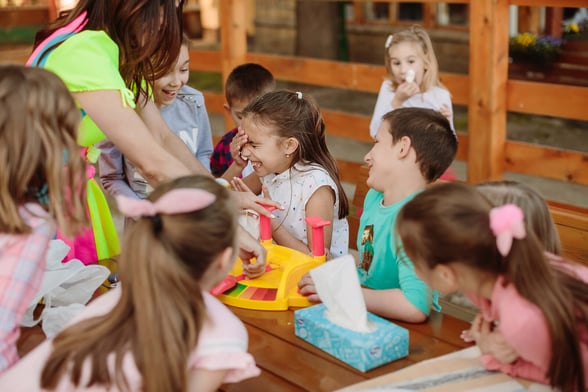
Science can be a fascinating subject for preschoolers, and small group activities make it even more engaging. Here are some hands-on science activities that will spark curiosity and exploration in young minds.
21. Sink or Float Experiment
Overview: This hands-on activity introduces preschoolers to the concept of buoyancy and encourages them to make predictions and observations. By testing various objects to see if they sink or float, students learn about the properties of different materials and develop critical thinking skills.
Materials:
- Large container or tub filled with water
- Various objects to test (e.g., rocks, feathers, coins, plastic toys, wood blocks)
- Two smaller containers or baskets labeled "Sink" and "Float"
- Towels for drying wet objects
Setup:
- Fill the large container or tub with water and place it on a table or low surface.
- Place the "Sink" and "Float" containers nearby.
- You'll need to gather various objects to be tested and place them in a pile near the water container.
Instructions:
- Introduce the concept of sinking and floating to the children, explaining that some objects stay on top of the water (float) while others go to the bottom (sink).
- Show the children the various objects and ask them to predict whether each one will sink or float.
- Have the children take turns selecting an object and gently placing it in the water.
- Encourage the children to observe what happens to the object and determine whether it sinks or floats.
- After testing each object, have the children place it in the corresponding "Sink" or "Float" container.
- Discuss the properties of the objects that sank and those that floated, encouraging the children to think about why certain objects behave differently in water.
- Extend the activity by having the children search for additional objects in the classroom to test or by exploring how changing an object's shape or material can affect its buoyancy.
22. Nature Color Scavenger Hunt
Overview: This outdoor activity encourages preschoolers to explore the natural world and observe colors in their environment. By searching for objects that match specific colors, children develop observation skills, color recognition and an appreciation for nature.
Materials:
- Color cards or paint swatches in various colors
- Paper bags or baskets for collecting items
- Outdoor space with a variety of natural elements
Setup:
- Choose an outdoor area with a diverse range of natural elements, such as a park, garden or playground.
- Prepare color cards or paint swatches featuring colors commonly found in nature, such as green, brown, red, yellow and purple.
Instructions:
- Explain the concept of a color scavenger hunt to the children, showing them the color cards or paint swatches they will be using as a reference.
- Divide the children into small groups or pairs, giving each group a set of color cards and a paper bag or basket for collecting items.
- Encourage the children to explore the outdoor area and search for natural objects that match the colors on their cards.
- As the children find matching objects, have them place the items in their bag or basket.
- Provide guidance and support as needed, helping children identify colors (e.g., a red choice, a green choice) and ensuring they are collecting items responsibly and safely.
- Once the scavenger hunt is complete, gather the children together and have each group share the objects they found for each color.
- Discuss the different colors found in nature and the importance of observing and appreciating the natural world.
- Extend the activity by having the children create a collage or nature-inspired artwork using the objects they collected.
23. Cloud in a Jar
Have you ever wondered how clouds form? Or why they float in the sky? Well, with this fun and educational small group experiment, your preschoolers can create their own mini clouds right before their eyes!
To start, gather your materials:
- A clear jar or container with a lid
- Hot water
- Ice cubes
- Hairspray
First, fill the jar about one-third of the way with hot water. Then, carefully add a few ice cubes to the top of the water. Now comes the exciting part – spray some hairspray into the jar.
As you watch closely, you'll see something magical happen. The warm air from inside the jar rises and meets the cold air from the ice cubes above. This causes condensation to form around tiny particles in the air – just like real clouds!
The result is an enchanting cloud formation inside your jar! Your little ones will be amazed as they observe how clouds are formed through this simple small group science activity for preschoolers.
24. Sink or Float Experiment
The Sink or Float experiment is a classic science activity that never fails to captivate young minds. It's a simple yet engaging way to introduce the concept of buoyancy and density to preschoolers.
To conduct this experiment, gather a variety of objects such as rocks, feathers, plastic toys, and fruits. Encourage the children to predict whether each item will sink or float before testing them in a tub of water.
Start by asking questions like, "What do you think will happen when we put this rock in the water?" This helps stimulate their critical thinking skills and encourages them to make hypotheses based on their observations.
Next, have the children take turns dropping each object into the water and observe what happens. If an object sinks, ask them why they think it sank. If it floats, prompt them to explain why they think it stayed on top of the water.
This hands-on experiment allows preschoolers to explore scientific concepts through observation and experimentation. It also provides opportunities for discussion about different materials' properties and how they interact with water.
Engage the children further by encouraging them to come up with reasons for their predictions based on what they've observed so far during the experiment.
25. How Germs Spread
One important lesson for preschoolers is understanding how germs spread and the importance of good hygiene. By engaging in this hands-on small group science activity for preschoolers, children can learn about germs in a fun and interactive way.
In this activity, you can use glitter to represent germs. Start by explaining that germs are tiny microorganisms that can make us sick if we don't take proper precautions.
Then, have each child dip their finger into a small amount of lotion or oil and sprinkle glitter on it. This will simulate the presence of "germs" on their hands.
Next, ask the children to interact with different surfaces, such as doorknobs, toys or tables. As they touch these objects, the glitter (representing germs) will transfer onto them. Encourage them to observe how easily the "germs" spread from one surface to another.
Afterward, gather all the children together and discuss what they observed during the activity. Talk about how proper handwashing techniques help remove these invisible "germs." Demonstrate how to wash hands thoroughly using soap and warm water for at least 20 seconds.
Christmas Small Group Activities for Preschoolers
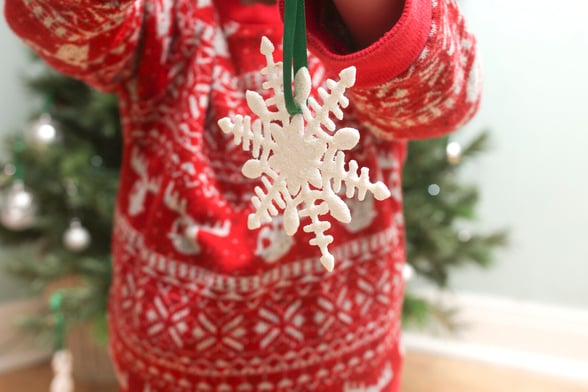
Christmas is a magical time for preschoolers, and what better way to celebrate than with fun small group activities? These activities keep the little ones engaged and promote social interaction and learning. Here are some exciting Christmas small group activities for preschoolers.
26. Christmas Sensory Bin
Create a festive and engaging sensory experience for your preschoolers with a Christmas-themed sensory bin! This activity is not only fun but also promotes exploration, fine motor skills and sensory development.
Instructions:
- Find a large plastic container or bin.
- Fill the bin with materials that represent the holiday season, such as fake snow, jingle bells, pine cones, small ornaments and mini Christmas trees.
- Add some scoops, spoons and cups to encourage pouring and transferring objects.
- Let the children freely explore the contents of the sensory bin using their hands or tools provided.
Materials Needed:
- Large plastic container or bin
- Fake snow
- Jingle bells
- Pine cones
- Small ornaments
- Mini Christmas trees
- Scoops, spoons, cups
As they dig through the tactile textures of snow and discover hidden treasures like jingle bells or tiny ornaments nestled among pine cones, their senses will be stimulated while they engage in imaginative play.
27. Scavenger Hunts
Scavenger hunts are a classic small group activity for preschoolers that can be both educational and fun. This interactive game allows children to explore their surroundings while searching for specific items or clues. It's a great way to promote problem-solving skills, teamwork and critical thinking.
You'll need some creativity and planning to set up a scavenger hunt for a Christmas small group activities for preschoolers. For this scavenger hunt, your list will include Christmas-themed items. This could include presents, snow, reindeer, Santa, etc. Make sure the list includes things you can find in your chosen area.
Next, provide each child with their own checklist and let them embark on their adventure! Encourage them to work together as they search high and low for hidden treasures. You can also add an extra level of excitement by incorporating riddles or puzzles into the hunt.
Remember to consider the age and abilities of your preschoolers when designing your scavenger hunt. Make sure the items are easily accessible and safe for them to handle.
Once all the items have been found, gather everyone for a debriefing session to share what they discovered during their quest. This is also an opportunity to reinforce any concepts or themes introduced through the scavenger hunt.
28. Christmas Tree Craft
This simple and engaging craft will keep the little ones entertained and help develop their fine motor skills and creativity.
To create your own Christmas Tree Craft, you'll need just a few materials. Gather the following items:
- Green construction paper or cardstock
- Scissors
- Glue sticks
- An assortment of colorful pom-poms or sequins as decorations
- If desired, you can also add a star cutout for the tree's topper.
Start by cutting out triangles from the green construction paper to form the trees. Encourage the children to use different sizes for variety. Next, provide them with glue sticks so they can attach their trees to another piece of paper or cardstock.
Once the trees are securely glued down, let their imaginations run wild as they decorate their trees using pom-poms or sequins as ornaments. They can also draw on additional details like garlands or presents under the tree branches.
Let them share ideas and help each other along the way. When they finish, you'll have an adorable collection of unique Christmas trees that make great decorations in any classroom or home setting.
Thanksgiving Small Group Activities for Preschoolers
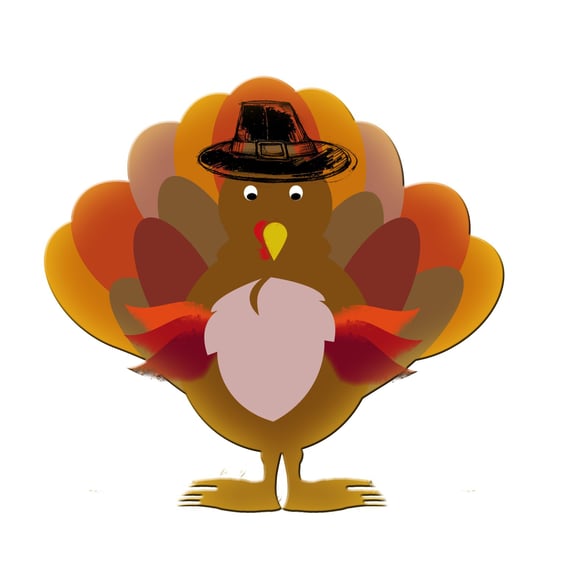
Thanksgiving is a wonderful time to teach preschoolers about gratitude, history and the importance of giving thanks. Engaging them in Thanksgiving small group activities for preschoolers can make the learning experience even more enjoyable. Here are some fun Thanksgiving-themed activities for preschoolers that will make the holiday more meaningful for them.
29. Thanksgiving Bingo
To play Thanksgiving Bingo, you will need bingo cards featuring various Thanksgiving-themed images, such as turkeys, pumpkins, cornucopias and pilgrim hats. Each child will receive their own bingo card and some markers to cover the called images.
The instructions are simple: one person acts as the caller and randomly selects an image from a bag or container. They then announce the image to the group, and each child checks if they have that image on their card. If they do, they cover it with a marker. The first child to cover all the images in a row or pattern yells "Bingo!" and wins.
30. Handprint Turkey Craft
Handprint Turkey Craft is a fun and engaging Thanksgiving small group activity for preschoolers that combines creativity and fine motor skills. This activity allows children to explore their artistic side while also learning about Thanksgiving traditions.
To start, gather the materials needed for this craft:
- Paper plates
- Construction paper in various colors
- Scissors
- Glue or tape
- Markers or crayons
Then, follow these simple instructions:
- Have each child trace their hand onto different colored construction paper.
- Cut out the traced handprints.
- Use a plain white paper plate as the turkey's body.
- Glue or tape the handprints around the edge of the plate to create feathers.
- Draw or cut out a turkey face from construction paper and attach it to the center of the plate.
- Encourage children to add extra details, such as feet or decorations on their turkeys using markers or crayons.
31. Thankful Chain
One fun and meaningful small group activity for preschoolers is creating a Thankful Chain. This activity not only encourages gratitude but also promotes teamwork and collaboration.
To start, provide each child with strips of construction paper in different colors. Explain to the children that they will be writing down things they are thankful for on these strips of paper.
Encourage them to think about all the people, places, objects or experiences that bring them joy and gratitude. It could be as simple as their family, friends or even their favorite toy.
Once everyone has written down their thankful thoughts on the paper strips, gather them together and help each child link their strip to form a chain. As the chain grows longer, it becomes a visual representation of all the things they are grateful for.
The children can take turns sharing what they wrote on their strips of paper with the rest of the group. This fosters communication skills and allows them to learn from one another's perspectives and experiences.
Small Group Winter Activities for Preschoolers
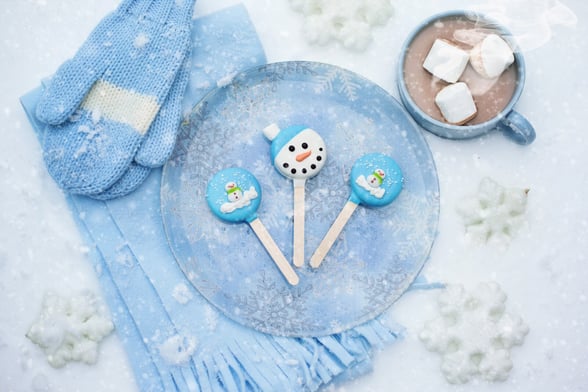
Winter is a magical season filled with snowflakes, cozy sweaters and hot cocoa. It's also the perfect time to engage preschoolers in fun and educational small group winter activities for preschoolers. Here are some ideas to keep your little ones entertained during the winter months.
32. Melting Experiment
This hands-on activity is perfect for small groups of children, allowing them to explore science concepts while having a blast.
To begin the melting experiment, gather some ice cubes and various materials such as salt, sugar, warm water and even food coloring if you want to add an extra element of excitement. Encourage each child in the group to make predictions about what will happen when they sprinkle salt or pour warm water onto the ice.
Next, let each child take turns experimenting with different materials. They can observe how quickly or slowly the ice melts and discuss their findings with their peers. This activity teaches kids about temperature changes and encourages critical thinking skills as they analyze cause-and-effect relationships.
As the children engage in this hands-on experience, be sure to ask open-ended questions that prompt them to think deeper about what they are observing. For example, "Why do you think adding salt makes the ice melt faster?" or "What happens when we combine warm water with cold ice?"
33. Snow Candy
Snow Candy is a sweet and delightful winter small group activity for preschoolers that children will love! It combines snow's magic with candy's deliciousness, creating a fun and tasty treat.
To make Snow Candy, you'll need just a few simple ingredients: clean fresh snow, maple syrup or honey and popsicle sticks or wooden skewers. Start by gathering some fluffy snow in a bowl or container - the fresher, the better!
Next, drizzle the maple syrup or honey over the snow. Depending on your preschooler's taste preferences, you can use as much or as little as you like. Then, carefully insert the popsicle sticks or wooden skewers into the snowy mixture.
Now comes the exciting part – waiting for your Snow Candy to freeze! Place it outside in freezing temperatures for about an hour until it becomes firm and icy. Once it's ready, simply remove it from the cold and enjoy this frosty confection.
Snow Candy is a great small group winter activity for preschoolers that provides sensory play and teaches kids about temperature changes and freezing points. Plus, they get to indulge in a yummy treat made with natural ingredients.
34. Snow Slime
Snow Slime is a fun and sensory activity that preschoolers will absolutely love! It's the perfect way to bring the magic of winter indoors. In this hands-on activity, children get to create their own slime that looks and feels like snow.
To make Snow Slime, you will need just a few simple ingredients. Start by combining white glue with liquid starch in a bowl. Mix it until it becomes thick and slimy. Then add some white glitter for an extra snowy sparkle.
Once the slime is ready, let the kids dive in! They can stretch it, squeeze it and mold it into different shapes. The texture of Snow Slime is soft and squishy, just like real snow!
This activity engages children's senses and helps them develop fine motor skills as they manipulate the slime. It also provides opportunities for imaginative play as kids pretend they are playing in a winter wonderland.
Social-Emotional Small Group Activities for Preschoolers
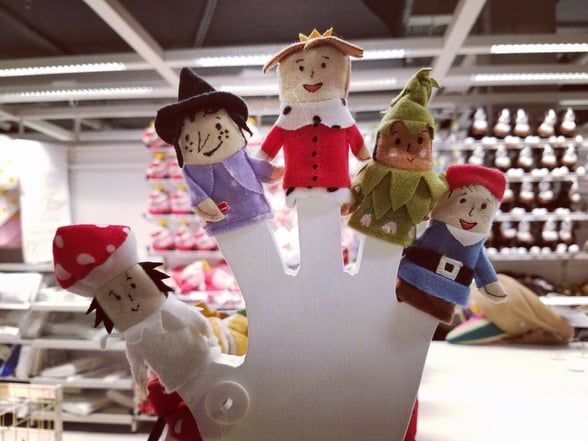
Fostering social-emotional development in preschoolers with small group activities can be incredibly beneficial. These activities enable children to interact and engage with their peers and also help them develop important skills like empathy, self-regulation and problem-solving.
35. Puppets
One simple social-emotional small group activity for preschoolers is using puppets.
- An easy puppet activity is to create sock puppets. All you need are some old socks, googly eyes, felt scraps, glue or tape and markers or fabric paint. Let the children get creative by decorating their own sock puppet characters. Then encourage them to put on a puppet show using their newly created friends.
- Another idea is to make paper bag puppets. Give each child a brown paper lunch bag and a variety of craft materials like construction paper, pipe cleaners and feathers. They can design their puppets by cutting out shapes for eyes, noses, mouths and other features. Once the puppets are complete, invite the children to share stories or sing songs with their new creations.
- You could also introduce finger puppets as an alternative option. These small fabric or felt characters fit snugly onto little fingers and allow children to bring their imaginations to life more intimately.
Puppets offer endless possibilities for creativity and self-expression among preschoolers in small group settings. Whether making sock puppets or performing with paper bags or finger puppets, these activities will surely bring joy and laughter while supporting important developmental skills!
36. Calm Down Jars
Calm Down Jars are a fantastic tool for helping preschoolers manage their emotions and find peace during times of stress or frustration. These simple jars can be made using clear plastic bottles or mason jars filled with water, glitter and a few drops of food coloring.
When a child is feeling overwhelmed, they can shake the jar gently and watch as the glitter swirls around, creating a mesmerizing effect. As they focus on the movement of the glitter settling back down to the bottom, their breathing slows, and their minds begin to calm.
The process of making these jars can also be a fun activity in itself. Preschoolers can choose their favorite glitter colors and help measure the ingredients. This hands-on experience allows them to feel empowered and involved in creating something that brings them comfort.
Calm Down Jars provide an opportunity for children to practice mindfulness by focusing on one thing at a time. By engaging with this sensory experience, they learn valuable self-soothing techniques that will benefit them throughout their lives.
Teaching Tips to Improve Small Group Preschool Activities
Implementing small group activities in your preschool classroom requires thoughtful planning and execution. Here are some essential tips to ensure your small group sessions are engaging, effective and enjoyable for all participants.
Clear Objectives
Define clear, achievable goals for each activity, ensuring they are age-appropriate and align with developmental milestones. Clear objectives help guide the activity and provide a focus for both the teacher and the children. By setting specific aims, such as improving fine motor skills through a craft project or enhancing social skills through a cooperative game, educators can create targeted learning experiences that support students' growth.
Preparation Is Key
When planning small group activities, prepare all materials in advance to ensure each activity runs smoothly. This includes setting up any necessary equipment, gathering supplies and having contingency plans for potential disruptions. By having everything ready before the session begins and a designated place in your classroom for the activity, teachers can focus their attention on facilitating the activity and engaging with the children, rather than scrambling to find missing pieces or improvising on the spot.
Inclusive Activities
Design effective small group activities that cater to varying levels of skill and development. This ensures all children can participate meaningfully and feel valued. Offer modifications or extensions to activities so each child can engage at their own level and experience a sense of accomplishment. For example, a drawing activity might include larger crayons and pre-drawn shapes for children still developing their grasp, while offering more intricate templates or free-form options for those with more advanced fine motor skills.
Incorporating Choice
Give children opportunities to make choices within the structure of the activity. This could include selecting materials, deciding on roles or determining the direction of the play. By offering age-appropriate choices, educators can foster a sense of autonomy and engagement, while still guiding the learning experience.
Positive Reinforcement
Use positive reinforcement to encourage participation and effort. Acknowledging accomplishments and efforts for group or independent work can boost confidence and motivation. Celebrate each child's unique contributions and progress, using specific praise that highlights their actions or attitudes. For instance, "I love how you shared the markers with your friend!" or "You worked so hard on that puzzle, even when it got tricky!" By focusing on the process rather than just the outcome, educators can foster a growth mindset and love of learning.
Monitor and Adapt
Continuously observe and assess the group dynamics and individual participation. Be prepared to adapt the activity or approach based on the children's engagement, understanding and behavior. If an activity seems too challenging, simplify it or break it down into smaller steps. If children are losing interest, introduce a new element or transition to a related activity. By being flexible and responsive, teachers can maintain a positive learning environment and ensure each child's needs are met.
Reflection and Feedback
After the activity, encourage children to share their experiences and thoughts. This reflection can provide insights into their learning and preferences. Ask open-ended questions that prompt children to think about what they enjoyed, what they found challenging and what they learned. This not only helps children process their experiences but also gives educators valuable feedback for planning future activities.
Parental Involvement
Engage parents by sharing what their children are learning and suggesting ways to extend the learning at home. This can create a more cohesive learning experience for the children. Keep parents informed about the skills and concepts being explored in small group activities and offer ideas for reinforcing that learning through everyday interactions and play. For example, if the group is focusing on sorting and categorizing objects, suggest that parents involve their children in sorting laundry or organizing toys at home. By fostering strong home-school connections, educators can amplify the impact of small group learning. [1] [2]
Preschool Classroom Group FAQs
What is small group instruction in preschool?
Small group instruction in preschool refers to a teaching approach where children are divided into groups of typically three to six individuals for targeted, hands-on learning experiences. These groups may be based on skill level, interests or learning style and the activities are designed to foster specific skills or concepts. [3]
The benefits of small group time for preschoolers include:
- Targeted skill development
- Increased individual attention from the teacher
- Opportunities for peer interaction and collaboration
- Ability to tailor activities to specific needs and interests
- Fostering a sense of belonging and community
- Encouraging active participation and engagement
- Providing a supportive environment for risk-taking and problem-solving [4]
How do you group preschoolers?
There are several strategies for grouping preschoolers, each with its own benefits and considerations:
- Random grouping: Children can be grouped randomly, for instance, by drawing names or using color-coded items. This method is quick and easy and can promote social skills as children interact with diverse peers. It's best suited for activities where specific skills or interests are not a main focus.
- Ability-based grouping: Children are grouped based on their skills or developmental levels. This allows teachers to tailor activities to the group's needs and provide appropriate challenges and support. However, it's important to avoid static grouping and ensure that all children have opportunities to interact with diverse peers.
- Interest-based grouping: Grouping children based on their interests or choices can enhance engagement and motivation. This approach fosters a sense of ownership and encourages children to explore their passions. It's particularly effective for open-ended, project-based learning [6].
- Mixed-age grouping: Mixing different ages in one group can provide opportunities for peer learning and mentorship. Younger children can benefit from the modeling and support of older peers, while older children can develop leadership and nurturing skills. This approach is well-suited for cooperative activities and fostering a sense of community. [5]
When should you have small group rime?
According to Dr. Wasik of Temple University, small groups are often underused in early childhood education. Some preschools limit small group time to circle time or designated activities. However, small group time is most effective when used flexibly throughout the day. By integrating small group activities into free play, outdoor time and transitions, students get many varied learning opportunities.
Get 100+ Editable and Printable Templates for Almost Every Preschool Situation
We know preschools like yours are busy. That's why we made dozens of templates to help you manage the various aspects of your organization. With billing and invoicing, activity templates, forms and even marketing materials, we have it all. Download all 100 today!
References
- NAEYC. (2020, April 8). Understanding the Power of Parent Involvement. NAEYC. https://www.naeyc.org/resources/blog/understanding-power-parent-involvement
- NAEYC. (n.d.). Principles of Effective Family Engagement. NAEYC. https://www.naeyc.org/resources/topics/family-engagement/principles
- Vanover, S. (2020, April). From Circle Time to Small Groups: Meeting Children's Needs. Teaching Young Children, 13(4). https://www.naeyc.org/resources/pubs/tyc/apr2020/circle-time-small-groups
- Smidt, W & Embacher, E (2020). The relational agency framework as a tool for supporting the establishment of early childhood programs in Finland. European Early Childhood Education Research Journal. (2020). https://www.tandfonline.com/doi/full/10.1080/1350293X.2020.1836586
- Wasik, B. (2008). When Fewer Is More: Small Groups in Early Childhood Classrooms. Early Childhood Education Journal, 35(6), 515-521. https://doi.org/10.1007/s10643-008-0245-4
- Martirena, C. C. (2021, September 16). How to Differentiate Instruction in Preschool. Edutopia. https://www.edutopia.org/article/differentiation-preschool





